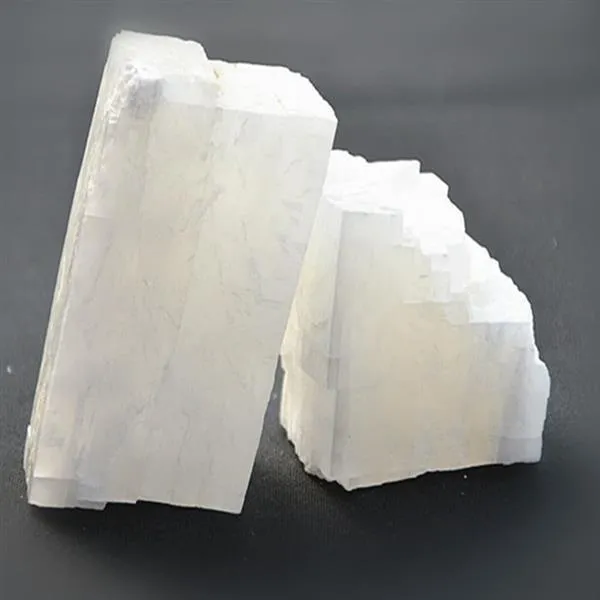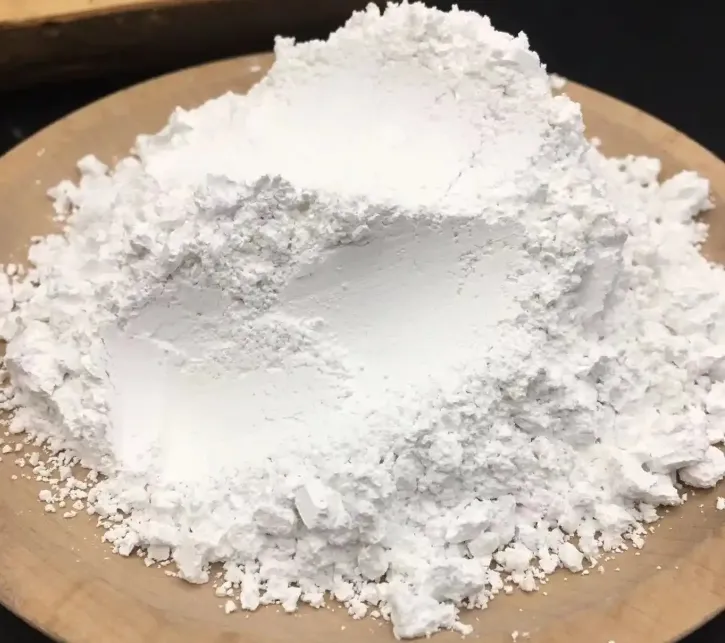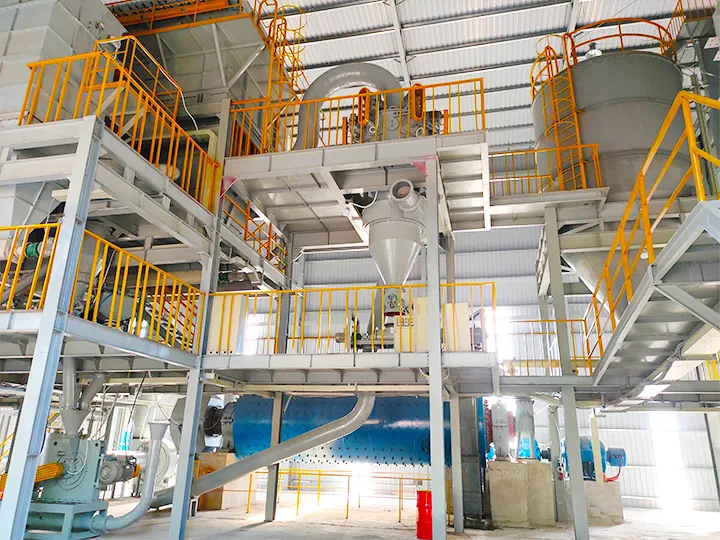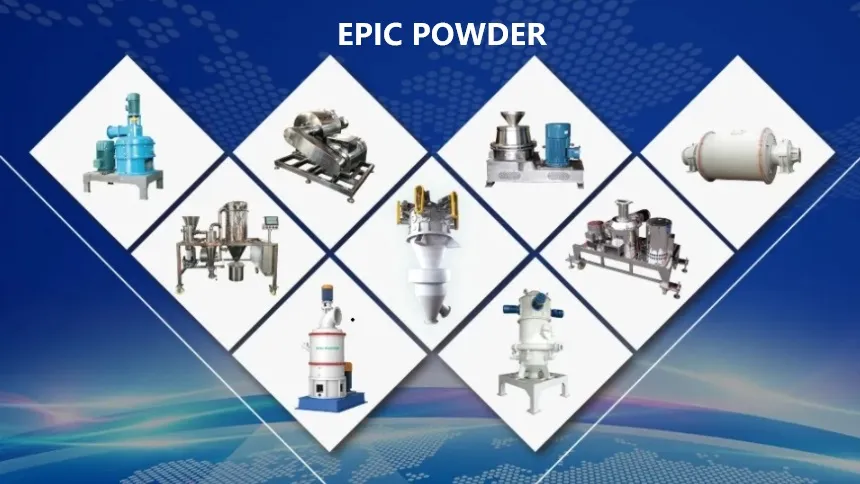Ground Calcium Carbonate (GCC) is a white powder made by grinding natural carbonate minerals such as calcite, marble, and limestone. Its main component is calcium carbonate (CaCO₃) with a relative molecular mass of 100.09. GCC typically appears as a white, odorless, and tasteless powder that is stable in air. It is almost insoluble in water but slightly soluble in carbonated water and reacts with dilute acetic acid, hydrochloric acid, and nitric acid, producing effervescence and dissolving.
Thanks to its high whiteness (generally above 90%), high purity, uniform particle size, good stability, and moderate hardness, GCC plays an indispensable role in various industries such as plastics, rubber, coatings, paper, and construction materials.
In the plastics industry, GCC enhances hardness, rigidity, heat resistance, and dimensional stability while reducing costs and improving processing performance.
In the coatings industry, it improves hiding power, adhesion, and weather resistance, while also reducing costs and enhancing cost-effectiveness. The ball milling classifier system has a single-line capacity of 100,000 tons. It offers precise particle size control. This system has become the mainstream process for large-scale GCC production.

Ball milling classifier system :The behind-the-scenes hero of heavy calcium processing
Ball milling and classification is a key link in the processing of heavy calcium. Ball milling classification play a critical role in the processing of Ground Calcium Carbonate (GCC). Ball milling is the process of grinding materials using a ball mill, where steel balls or other grinding media impact and grind the material, gradually reducing its particle size. Classification involves using a classifier to separate milled material by particle size, producing GCC products with different specifications. In the paper industry, finer and more uniform GCC improves whiteness, smoothness, and opacity of paper.
In the plastics industry, controlled particle size distribution enhances dispersion and reinforcement within plastic formulations. Enhanced Production Efficiency & Cost Reduction A well-optimized milling and classification process increases output, reduces energy consumption, and lowers production costs.
This contributes to a more competitive GCC product in the market. By refining ball milling and classification techniques, manufacturers can meet industry-specific needs, improve efficiency, and enhance product quality, strengthening their market position.

Key points of ball milling and classification process
Working Principle
A ball mill grinds materials using grinding media like ceramic or steel balls. The rotating cylinder generates impact and shear forces.The grinding medium in the mill repeatedly impacts and grinds the material by virtue of the kinetic energy obtained when the mill rotates. The crushed material is discharged into the suction tank through the tail of the ball mill, and then transported to the classifier for classification by negative pressure. The qualified fine powder is collected by cyclone collector or dust collector, The coarse particles after classification are discharged from the lower end of the classifier, and then re-enter the ball mill for crushing through the feeding pipe.
The design is different from traditional cement mills and mining and metallurgical mills. It meets the requirements of German superfine filler-grade mineral processing. Optimize the aspect ratio to prevent excessive grinding and achieve optimum grinding results. Optimize the opening ratio and opening design of the jaws. Increase the grinding fineness with smaller grinding media. The slab-type grinding tail discharges smoothly. There is no grinding phenomenon, and the cylinder does not need to be cooled.
Grinding media are selected according to product requirements with a reasonable ratio and high filling rate. This results in high efficiency.
Grinding aids are used when grinding ultrafine powders to improve grinding efficiency. Optimize the matching of the drive and grinding energy to maximize energy savings. The classifier forms a closed system with negative pressure conveying, producing no dust.
Optimize the shape and material of the lining and grinding media according to German standards. This reduces the damage rate and improves grinding efficiency. Hard minerals can be designed with no iron pollution. The lining and grinding bodies are made of alumina ceramic, quartz, SILEX, or special materials.
Production System
High-speed, multi-rotor classifiers achieve a wide range of particle size adjustments. By adjusting the classifier’s impeller speed and airflow, different particle sizes can be produced. This satisfies the diverse particle size requirements in industries like plastics, coatings, and paper.
Moreover, the system’s series and parallel configuration enables special product production. By properly configuring the ball mill and classifier, products with special particle size distributions can be made. For high-end plastic products, GCC with low oil absorption is required for optimal performance. Optimizing the series and parallel configuration produces GCC that meets these specific requirements.

Typical case
- A company in Sichuan (commissioned in 2000) Technical Configuration: Utilizes a ball mill + multi-stage turbine classifier + pulse dust collection system, with an annual production capacity of 100,000 tons of 1250-mesh GCC powder.
- Large European powder companies:
Process Features: Ball mill + multi-stage classifier in series, with a single-line capacity exceeding 100,000 tons/year, producing 800-2500 mesh narrow distribution products, suitable for the paper and coatings industries.
Technology Comparison: Compared to vertical mill processes, the ball mill system achieves a higher specific surface area for products above 1250 mesh , making it more suitable for high-value applications. - A company in Qingdao (2015)
Equipment Improvements: Optimized the ball mill length-to-diameter ratio (φ3×9m) and the diaphragm hole rate (12%-15%), combined with zirconia ceramic grinding media, reducing iron contamination to 6g/t. Classification Breakthrough: Utilized a high-speed turbine classifier to achieve precise particle size cutting in the range of 5-45μm.
Infinite possibilities of ground calcium ball milling classifier system
With the rapid development of emerging industries like new energy, aerospace, and electronics, the demand for high-performance materials is increasing. As an important base material, GCC has broad application prospects in these fields. In the new energy battery sector, GCC can be used as an additive in battery separators to improve their performance. In aerospace, GCC-based composites are used to manufacture aircraft parts, reducing weight and improving performance. It is expected that GCC ball milling and classification technology will play a significant role in emerging industries, with vast growth potential.
